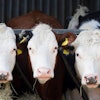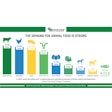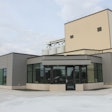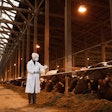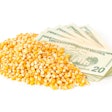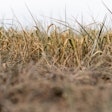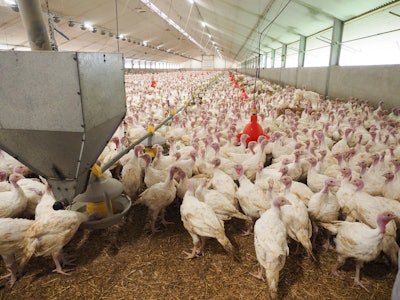
When it comes to the debate over whether it is better to feed turkeys a mash feed or pelleted feed, available research shows that pellets are the superior product with the only significant disadvantage being the cost.
“Quality costs money,” Dawn Koltes, assistant professor with the Iowa State University (ISU) Department of Animal Science, said during an April 10 presentation at the PEAK show in Minneapolis.
Issues with nutrient sorting
Ingredient-wise, there typically is not a difference between the two feed forms, Koltes said, but there can be a difference in the turkeys’ intake of the feed ingredients.
With mash feeds, one important consideration is the size of the feed particles. Attention needs to be paid not to make them too large or too small.
“We know that as we get smaller particle sizes, that gizzard doesn’t work as well, and it can cause problems with digestion and absorption. We also know that if it is too fine, our birds don’t want to consume it,” said Koltes.
“If we go with too large of a particle size, then we have nutrient sorting, which means that those micronutrients that we are adding … can sort to the bottom and those birds are not consuming them, so they’re no longer getting that well balanced diet that we wanted them to have.”
This can also be an issue with pellets if they are not formed properly, although the odds of that happening are reduced.
When pelleting feeds, you have the same mix, the pelleting procedure involves running the mash feed through a conditioner, with which heat and moisture is added to get it to stick together in pellet form. But once the pellets come out of the dye, they are hot and need to be cooled down to an ambient temperature. If this is not done properly, there could be issues with the pellets crumbling or not sticking together.
Koltes pointed out that turkeys can also pick at the feed and leave certain feed ingredients behind.
“If everything is formed into a nice pellet, you’re not likely to see birds sort things out. They have to actually work a lot harder to sort them out, and so often they’ll just consume everything,” she said.
Transportability
Koltes said pelleted feeds also are the superior feed in terms of transportability. It is easier to move pellets than it is a mash feed, with less spillage, and less dust, both in the mill and at the farm.
Pellets also tend to flow through feeding systems as well.
Impacts on live production
Koles cited several older studies that showed that body weight gain for turkeys between 8 and 12 weeks old is higher when fed a pelleted diet. However, she pointed out that as the nutrient content increases, the change in body weight becomes less, but regardless, birds are heavier when they’re fed a pelleted diet.
Trials done at ISU with some toms fed a mash diet and others a pelleted diet, showed increased weight for those that consumed pellets.
Koltes also referenced an older study that revealed turkeys eating pelleted feed spend less time at the feeder, however she said because of the age of the study, that situation may need to be revisited.

